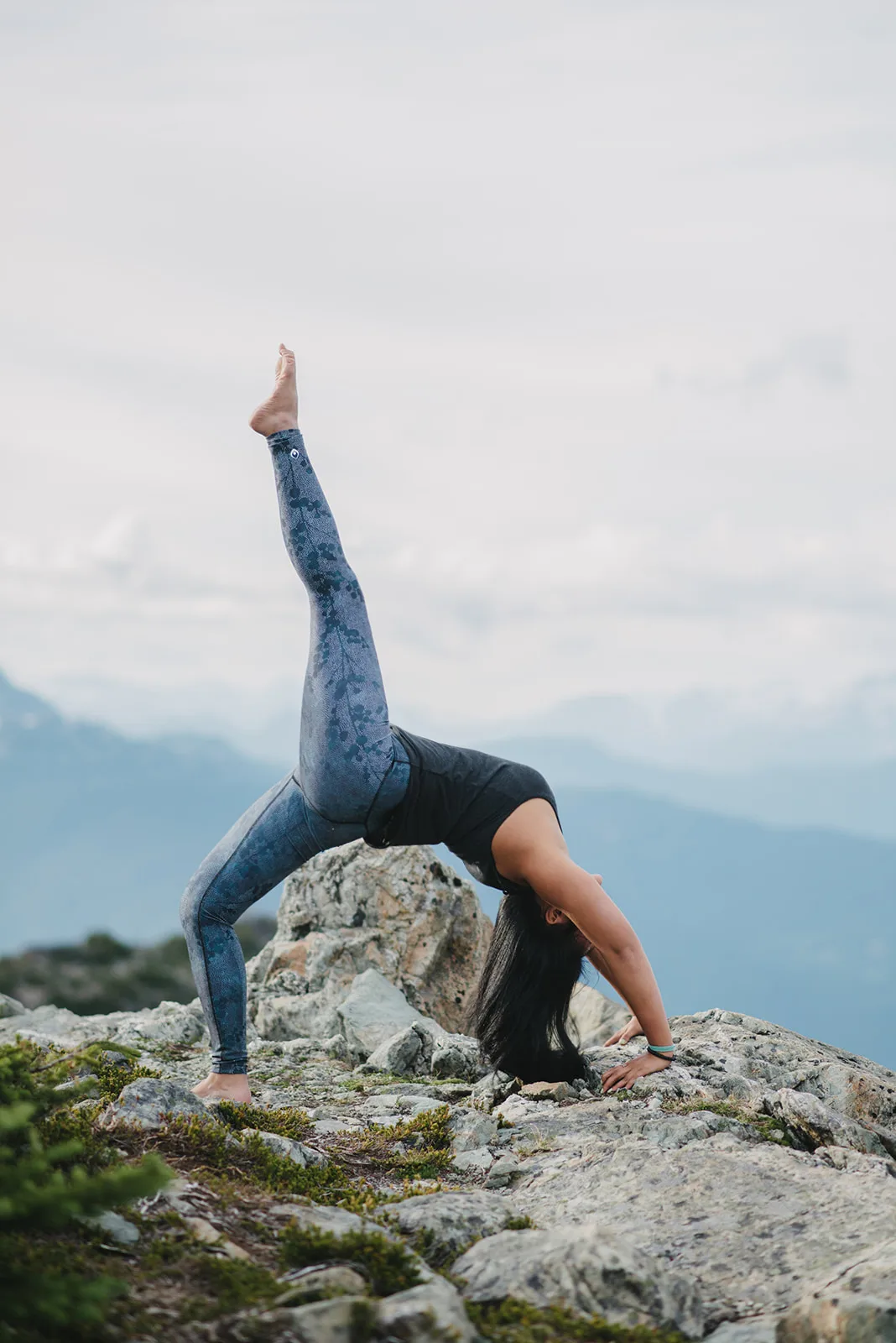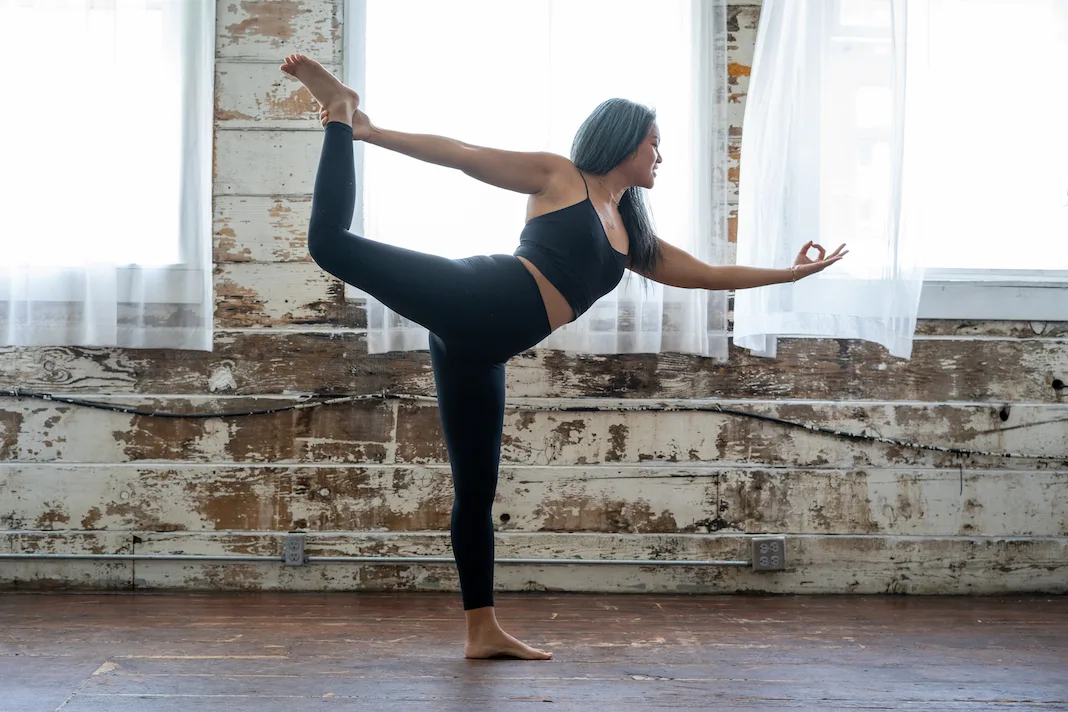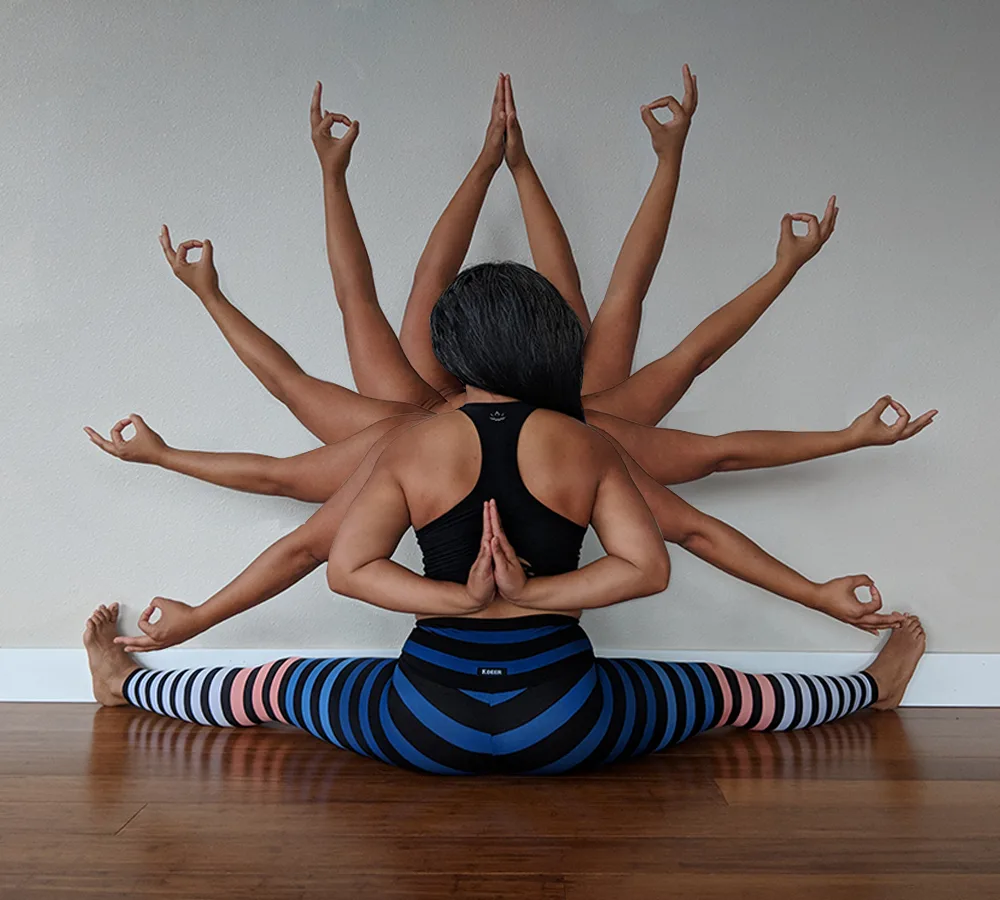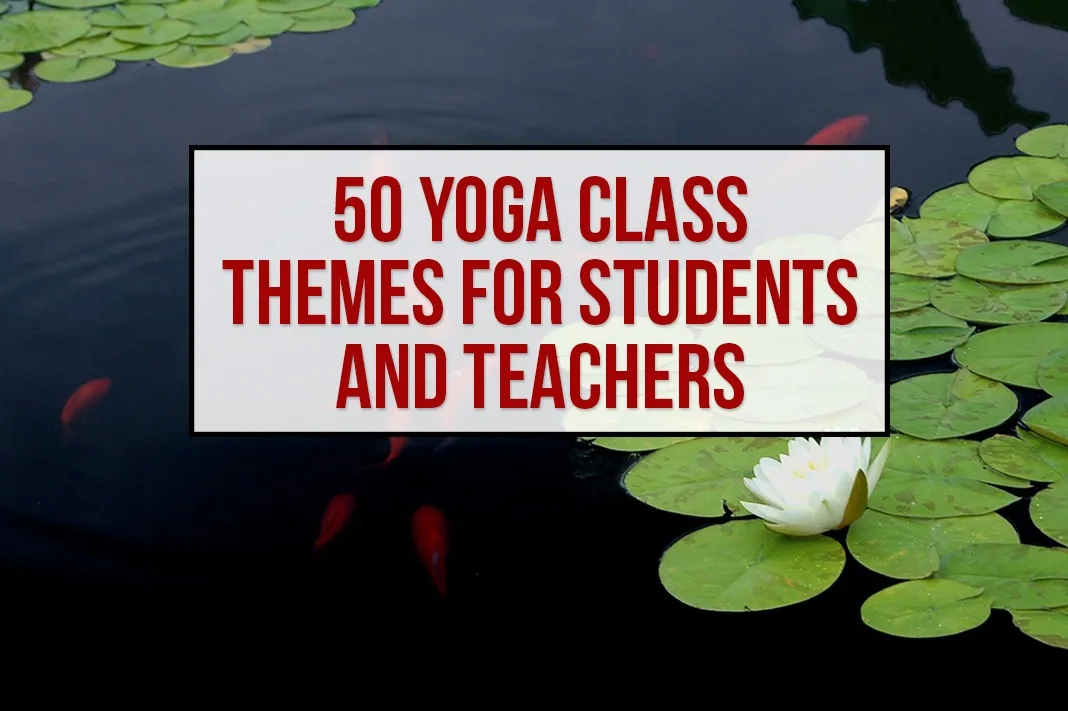Have you ever left a classroom where a yoga teacher began class by presenting a theme and then elegantly wove it into the body through asana instruction? The beauty of a synchronized combination of breath, asana, and intention is something to look forward to each time you revisit your mat. A good theme can inspire, generate insight, provide fodder for reflection, and even provoke!
Becoming a successful yoga teacher means being able to give concise and clear-cut cues to allow students to float smoothly between asanas (or poses). But the theme you present during class sets you apart and shows your individuality as a teacher.
It’s a great way to let your students know that yes, you’re human and that we’re all walking along this path together. What you say in class and how your message resonates long after your students step off their mat and out the door, is the other instruction of yoga, the reasons why you teach yoga.
There have been many moments where I am at a loss for words and what to say in my classes. Having a theme will not only help guide you through practice but will allow you to do so with intention and clarity. Writer’s block is hard especially if you’re new to teaching yoga.
We’ve curated a list of 50 yoga class themes for you to use. For students – when your teacher asks you to set your intention, use these themes to help guide your practice. Don’t limit yourself to using these only on the mat while in the yoga studio, many of these themes are relevant in other parts of our lives too!
The themes are accumulated from life, books, music and through taking other yoga classes. I’m thankful to all my teachers who have inspired me to create this list.

Create An Experience
- Leaving your comfort zone and finding new comfort zones. Have students think about their limits and find ways to safely move beyond them. This lesson resonates with me the most, especially when I was learning handstands using the wall. It took me years of practice to get away from the wall. By getting out my comfort zone, I ended up finding a new norm! Approaching things in a different manner can be scary, but overcoming your own limitations will open doors to more challenges that you can achieve.
- Link movement with breath. This can be a challenge, especially when we are faced with postures and moments that force us to lose the concentration of our breath. Finding that synchronicity between body and breath will make for a meditative practice. Don’t rush the breath, fall in line with it.
- Let go of anything that no longer serves you. Yoga is all about getting rid of the negative and embracing the positive. At the beginning of class, I remind students to let go of something that they come to yoga to get out of the mind. As students are taking their first few ujjayi breaths, I offer them three opportunities to exhale what no longer serves them at this moment, on the mat.
- Express gratitude for your body, exactly as it is right now. At the end of each class, remind students to be grateful to have a body that’s capable of doing yoga.
- Use Mudras. I often teach multiple mudras in class and explain how they are an extension of our intentions. Teach and allow your students to express themselves through the use of mudras during flow and meditation.
- Celebrate the small wins. Did you hold bakasana (crow pose) for half a second? Maybe you’re a few inches farther from the wall in your headstand? That’s a cause for celebration! The small wins will eventually add up.
- Practice non-attachment. Why get attached to beating yourself up over a pose that’s challenging? Similarly, why get attached to certain situations, things or ideas about life? Practicing non-attachment is a big part of yoga that I’m working on bringing into my daily routine.
- Opposite Sensations. Begin by cultivating the feeling of being light. Light enough that you float away. Then bring the body back to groundedness. Make the body feel heavy and immovable. Appreciate how the mind can really take the body into any adventure you put your mind to.
- Outer Body Experience. Imagine you are out of your body and can see the body from every angle. Notice the back, front, sides, top and bottom. Repeat this process and practice observation without judgment.
- Make Friends, Cultivate Sangha! Yoga is a personal practice but it can also be filled with community. Create flows where students lock hands, support each other’s limbs and breathe so loud that it reminds their neighbors to breathe too. Don’t be afraid to talk to people before or after class. You clearly share similar interests, so you may have more in common than you think.
- Practice Non-Judgement. Are there poses that you simply hate getting into because of how it makes your body feel? Instead of attaching a feeling or label to that sensation, approach it with non-judgment. Just see it as a sensation that the body experiences. Become the objective observer.
- You Are Different! Encourage students to find their fullest expression of a pose. If it requires a block, a bind, an inversion, let that be their fullest expression! Remind your students that they are different, and they were meant to stand out.
- Dedicate your practice to someone else. If you aren’t interested in setting a personal intention, dedicate your practice to someone else.
- Weather yoga. Choose poses and create energy that’s opposite of the day’s weather. If it’s dark and gloomy outside, build a sequence that will energize the class. If it’s sweltering, cool down with restorative poses and shitali pranayama (cooling breath).
- You Are Your Own Teacher. Encourage students to add or subtract what they need to in their practice. Allow them to practice being their own teachers. I usually allow students to flow through flows on their own after showing them the progression and then talking them through it. By the third round, I encourage mistakes and for students to add or take out what does not serve them.
- Timelessness. Imagine that your yoga class does not have a start or end. It is timeless. If you had all the time in the world to explore poses on the mat, how would you do it? Make every movement purposeful and deliberate.
- You Feel You Now? Instead of envisioning what a pose looks like, envision what it feels like. Continue that practice from the start of your class and into your savansana.
- Back to Basics. Ask students to think back to their first yoga class – how every movement felt new and different. Have them relive that feeling in each pose.
- Breath is Music. Turn off the music and encourage your students to focus on the harmony and cadence of their breath. Hearing them self move is a tribute to being alive.
- Love thyself! Offer students an intention to love one of their traits that they wouldn’t think to immediately self-love. This trait could be something physical, cognitive or behavioral. Reaffirm that love throughout the practice.
- Get Deeper in the Pose. Encourage students to take the pose to a deeper place, the spot where you feel the most challenged. What doesn’t challenge you won’t change you. Going deeper may also promote opportunities to advance your practice!
- Be Real. Contrary to what we see on social media, yoga isn’t supposed to be pretty. It’s supposed to be intangible. There are moments where we fall, make weird noises and look hopeless. Embrace the imperfections of your yoga practice and observance. Know that you’re working towards something that no one but you can see.
- Free Time. Give students time to practice whatever is calling to them at that moment. Remind them at what they do with their free time does not have to be asana, it could be spent in meditation too!
Getting Into the Body
- Root to Rise. Remind students to ground everything from the belly button down and find EXPANSION from the belly up! I equate the bottom half of the body to being filled with lead while the upper half are like light rays shining in every direction.
- Align the Bones. Identify the poses where students usually misalign their hips and shoulders (such as dancer/Natarajasana and crescent lunge/Anjaneyasana). Work on getting students to get their hips and shoulders in one plane.
- Feel it in your bones. Focus on feeling yoga physically and internally. Spend class appreciating every movement as it radiates outwards and inwards. Make every movement purposeful and deliberate.
- Umpada Drishti (Inward Gaze). Encourage your students to flow through asanas with eyes closed. Have them experience what yoga feels like, rather than what it looks like. Encourage them to practice this at various times throughout the practice. This will give them the opportunity build self-trust.
- You Aren’t As Sama As You Thought You Were. In yoga we practice the posture on each side to feel sama or “sameness.” No matter how many times we practice, one side of your body is always different than the other due to genetics or injury. Recognize that we are not perfectly balanced and that’s okay!
- We Meet Again. Choose a specific pose to come back to throughout class. Build a progression of that pose with cues to hold the pose longer each time or increase the challenge by transitioning the pose to the next level (i.e. twisted chair to side crow).
- Lengthen to Twist. Guide students to lengthen on their inhales and twist on their exhales. Eventually, by the end of class, students will walk bout 1mm taller than they entered. Quoting one of my teachers, Tina Templeman, “Yoga will make you taller!”
- Get Twisted! Incorporate twisting in standing, seated and supine asanas. Focus on twisting the four areas of the spine either together or separately: cervical, thoracic, lumbar and sacral.
- Move With Your Core. Offer exercises to wake up the uddiyana bandha and keep it active throughout the class. Use the exhalation to re-engage the uddiyana bandha. Many twisting and forward bending poses will benefit from an active core, allowing students to twist and fold forward with more intention and depth.
- Make Noise! Make a noise whenever and however you feel like! I recently taught a yoga class to a group of older students and the sounds they made were so expressive! Their vocalization reminded me that there’s more to yoga than the poses. Simply chanting “om” feels good. Add sound to your class. This can be mantras, Chakra sounds, songs and even audibly expressing your gratitude!
- Take a Step Back. Is your intention of coming to yoga to make the body feel better? If there is a pose that causes pain, discomfort, or you’re just not ready, don’t be afraid to take a step back and just observe and practice Ahimsa. Do this to promote a long and healthy practice.
- Be still. Sometimes in class, we simply sit quietly with our eyes closed. Students will start to realize that being still is not easy, but it’s beneficial when we are able to get comfortable with the uncomfortable.
- Passive VS Active Engagement. Explore the differences between moving into yoga poses passively and actively. Active yoga is when we engage our muscles to get into poses. Passive is when we pull and hook with our fingers, feet and hands to create the pose. Try to find that balance between active and passive engagement.

Motivational Quotes
- “It’s all about the journey, not the destination.” The perfect metaphor for life. In yoga, it’s all about the journey, not the destination. It’s about what happens at each step along the way and how it changes and moves you.
- “We must be willing to let go of the life we planned so as to have the life that is waiting for us.” – Joseph Campbell
- “Yoga teaches us to cure what need not be endured and endure what cannot be cured.” – B.K.S. Iyengar
- “Yoga is the practice of tolerating the consequences of being yourself.” – Bhagavad Gita
- “The highest spiritual practice is self-observation without judgment.” – Swami Kripalu
- “Your task is not to seek for love but merely to seek and find all barriers within yourself that you have built against it.” –Rumi
- “Your present circumstances don’t determine where you can go, they merely determine where you start.” – Nido Qubien
- “Ignorance is regarding the impermanent as permanent.” –Sutra 2.5, The Yoga Sutras of Patanjali translated by Sri Swami Satchidananda
- “Every thought you produce, anything you say, any action you do, it bears your signature.” – Thich Nhat Hanh, a Buddhist monk
- “The privilege of a lifetime is to become who you truly are.” – Carl Jung
- “To be yourself in a world that is constantly trying to make you someone else is the greatest accomplishment.” – Ralph Waldo Emerson
- “Perfect courage is to do without witnesses what one would be capable of doing with the world looking on.” – Francois de La Rochefoucauld
- “Yoga is the journey of the self. Through the self. To the self.” – The Bhagavad Gita

Last Theme (and probably the most important)
50. Yoga Has NO END. You will NEVER be perfect at yoga. There is no end and there is always room for continuous improvement and progress. With this in mind, always approach the impossible with hope.
Maybe one day when you least expect it, what you were tirelessly looking for will meet you where you are. There is so much opportunity in yoga, which keeps me coming back to my mat. With hope the possibilities are endless!
Embrace the journey you deserve!
If you like this post, you might like these too:
- Yoga Pose Library
- What to Do When Someone Walks Out of Your Yoga Class
- Inspiring and Motivational Yoga Quotes
Thank you for visiting today! If you found this encouraging or informative, please connect with us on Instagram or TikTok. Sign up for our monthly newsletter for updates and more. We promise we won't spam you! Feel free to unsubscribe anytime. If you're a brand and want to work with us, please visit this page to get in touch.


